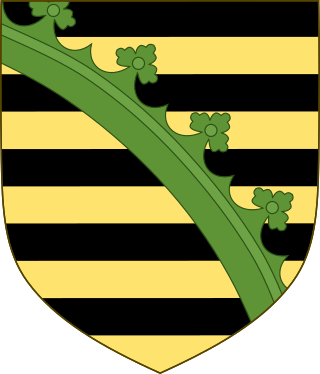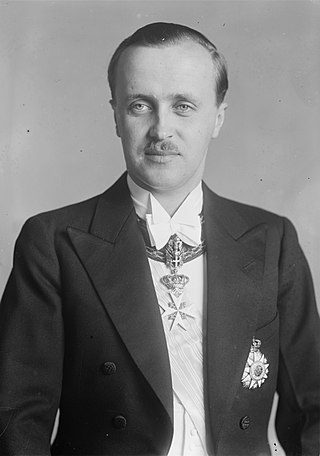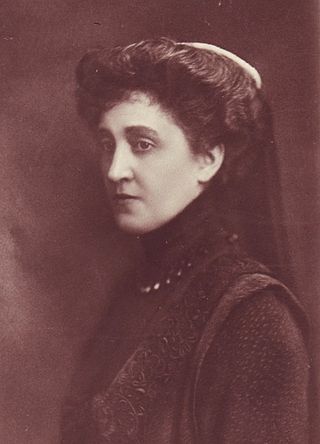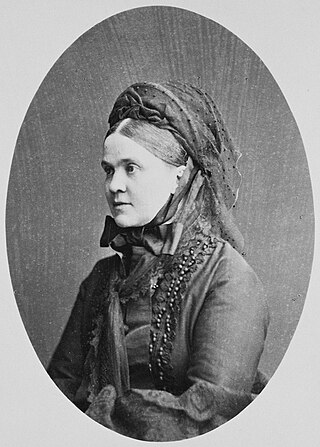
The Most Serene House of Braganza, also known as the Brigantine dynasty, is a dynasty of emperors, kings, princes, and dukes of Portuguese origin which reigned in Europe and the Americas.

The House of Wettin was a dynasty which included Saxon kings, prince-electors, dukes, and counts, who once ruled territories in the present-day German federated states of Saxony, Saxony-Anhalt and Thuringia. The dynasty is one of the oldest in Europe, and its origins can be traced back to the town of Wettin, Saxony-Anhalt. The Wettins gradually rose to power within the Holy Roman Empire. Members of the family became the rulers of several medieval states, starting with the Saxon Eastern March in 1030. Other states they gained were Meissen in 1089, Thuringia in 1263, and Saxony in 1423. These areas cover large parts of Central Germany as a cultural area of Germany.

The House of Leszczyński was a prominent Polish noble family. They were magnates in the Polish–Lithuanian Commonwealth and later became the royal family of Poland.

DomDuarte Nuno, Duke of Braganza was the claimant to the defunct Portuguese throne, as both the Miguelist successor of his father, Miguel Januário, Duke of Braganza, and later as the head of the only Brigantine house, after the death of the last ruling Braganza, King Manuel II of Portugal. In 1952, when the Portuguese Laws of Banishment were repealed, the Duke moved his family to Portugal, thus returning the Miguelist Braganzas to their homeland and becoming the first of the former Portuguese royal dynasty to live in Portugal since the abolition of the monarchy in 1910.

Infanta Maria Ana of Portugal was a Portuguese infanta (princess), the eldest surviving daughter of Queen Maria II of Portugal and her King consort, Ferdinand II of Portugal, a member of the House of Braganza.

DomSebastian Gabriel de Borbón y Braganza, Infante of Portugal and Spain, was an Iberian prince of the 19th century, progenitor of the Spanish ducal lines of Hernani, Ansola, Dúrcal and Marchena, and Carlist army commander in the First Carlist War.
Maria Ana of Portugal may refer to:

Infanta Marie Anne of Portugal was Grand Duchess of Luxembourg as the wife of Grand Duke William IV. She was the regent of Luxembourg between 1908 and 1912; first during the illness of her spouse, and then in the name of their daughter, Grand Duchess Marie-Adélaïde.
Maria of Portugal is the name of several Portuguese queens, queens consort, princesses and infantas, some of whom reigned as Queen of Spain or other lands:

Adelaide of Löwenstein-Wertheim-Rosenberg was the wife of the deposed king Miguel I of Portugal. As a widow, she secured advantageous marriages for their six daughters.

Infanta Maria José of Portugal, sometimes known in English as Maria Josepha, was a Portuguese infanta, later Duchess in Bavaria by marriage. She was the maternal grandmother of King Leopold III of Belgium and Queen Marie-José of Italy.

Prince Miguel of Braganza, Duke of Viseu was a member of the exiled branch of the House of Braganza. The eldest son of the Miguelist pretender to the throne of Portugal he married an American heiress in 1909 and in 1920 renounced his rights to the throne. His full given names were Miguel Maria Sebastião Maximiliano Rafael Gabriel Gonzaga Francisco de Assis e de Paula Eustáquio Carlos Afonso José Henrique Alberto Clemente Inácio Martinho António Gerardo Jorge Emerico Maurício.

Marie Gabrielle Duchess in Bavaria, was the youngest daughter of Duke Karl Theodor in Bavaria and his second wife, Infanta Maria José of Portugal. She married Prince Rupprecht of Bavaria in 1900 but died before he became Crown Prince. Through her second son Albrecht, Marie Gabrielle was the grandmother of the present Duke of Bavaria, Franz.

Prince Maximilian William Augustus Albert Charles Gregory Odo of Saxony, Duke of Saxony was a member of the Albertine branch of the House of Wettin and a Catholic priest.
Princess Isabel Maria of Braganza, Infanta of Portugal was a member of the House of Braganza. Through her marriage to Franz Joseph, 9th Prince of Thurn and Taxis, Isabel Maria was also a member of the House of Thurn and Taxis and Princess consort of Thurn and Taxis.
Princess Maria Ana Rafaela Micaela Gabriela Lourença of Braganza, Infanta of Portugal, full Portuguese name: Maria Ana Rafaela Micaela Gabriela Lourença de Bragança, Infanta de Portugal was a member of the House of Braganza and the wife of Karl August, 10th Prince of Thurn and Taxis.

Princess Maria Theresa of Löwenstein-Wertheim-Rosenberg was a Princess of Löwenstein-Wertheim-Rosenberg and a member of the House of Löwenstein-Wertheim-Rosenberg by birth and an Infanta of Portugal, Duchess consort of Braganza, and titular queen consort of Portugal through her marriage to Miguel Januário, Duke of Braganza, Miguelist claimant to the throne of Portugal from 1866 to 1920.

Charles III of Spain is the third surviving son of the first Bourbon King of Spain Philip V and Elisabeth Farnese. The descendants of Charles III of Spain, are numerous. Growing up in Madrid till he was 16, he was sent to the Italian Sovereign Duchy of Parma and Piacenza which, through his mother Elisabeth of Parma, was considered his birthright. Charles married only once, to the cultured Princess Maria Amalia of Saxony, with whom he had 13 children; 8 of these reached adulthood and only 4 of these had issue.

The Pantheon of the House of Braganza, also known as the Pantheon of the Braganzas, is the final resting place for many of the members of the House of Braganza, located in the Monastery of São Vicente de Fora in the Alfama district of Lisbon, Portugal. The pantheon's burials have included Portuguese monarchs, Brazilian monarchs, a Romanian monarch, queen consorts of Portugal, and notable Infantes of Portugal, among others.

Duchess Sophie in Bavaria.
















